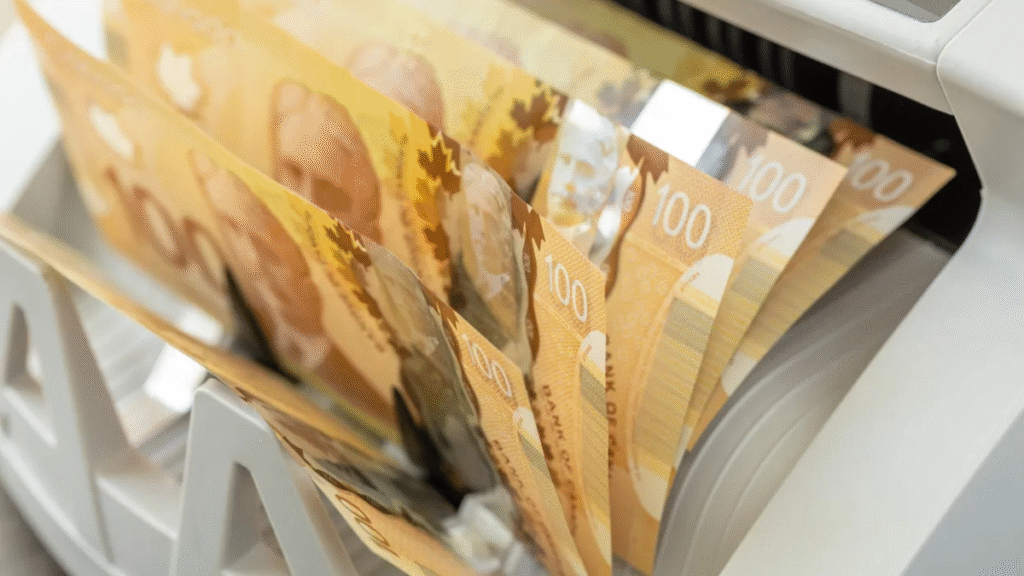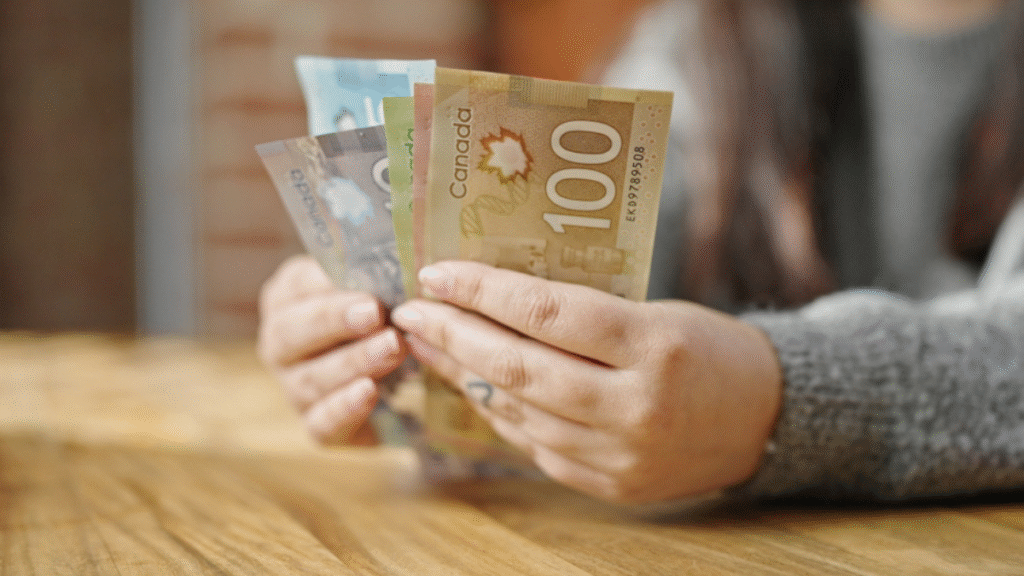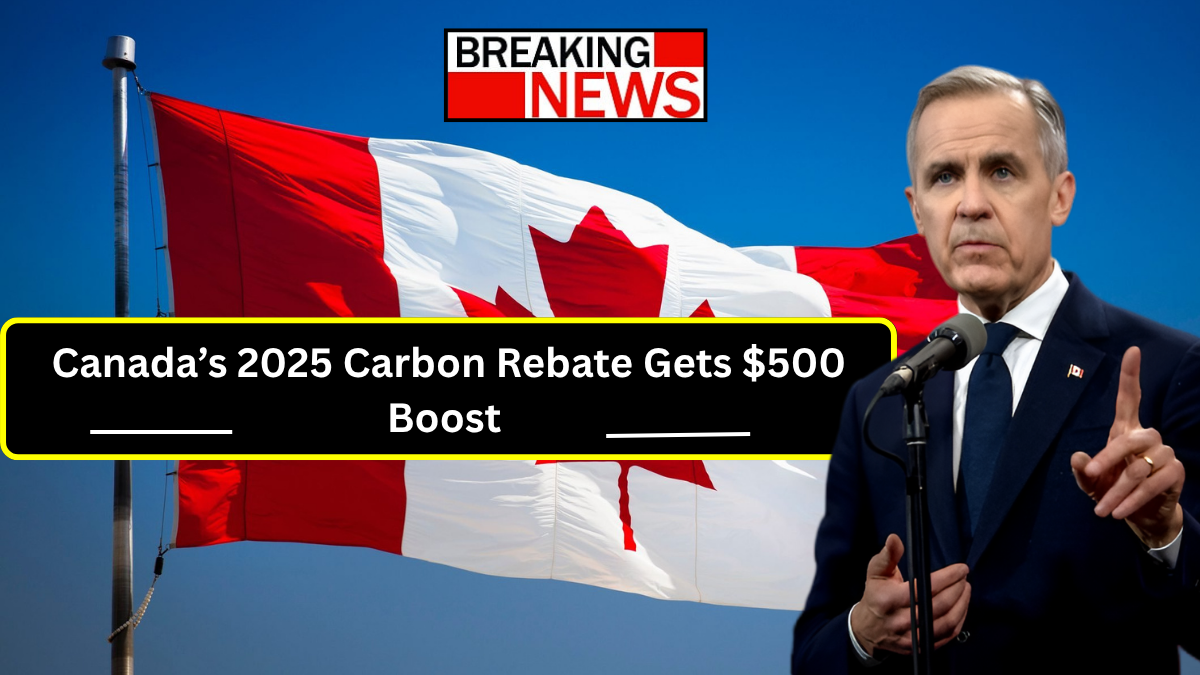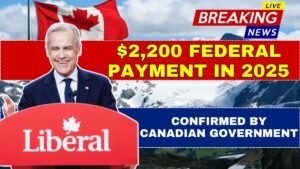With the cost of living on the rise, Payment every bit of financial relief can make a big difference. That’s why the proposed $500 annual increase to the Canada Carbon Rebate (CCR) is catching the attention of households across the country. Formerly known as the Climate Action Incentive Payment (CAIP), this rebate is meant to help offset the costs of Canada’s carbon pricing system, which places a tax on fuels and energy that produce greenhouse gas emissions.
This increase could help families cover rising energy bills, groceries, and transportation costs while still supporting Canada’s long-term climate change goals. If you live in a province where the federal carbon pricing system applies, understanding how the CCR works and how you can qualify could put extra money in your pocket every year.
What Is the Canada Carbon Rebate?
The CCR is a tax-free payment given to eligible Canadians to help balance the cost of the federal carbon tax. The carbon tax is designed to encourage people and businesses to use cleaner energy and reduce greenhouse gas emissions. However, the government also recognizes that this tax could increase household expenses, especially for heating, electricity, and transportation. That’s where the rebate comes in—it is designed so most families receive back more money than they actually pay in carbon tax.
The CCR is paid four times a year—in January, April, July, and October—so you can plan for these payments as part of your household budget. You don’t need to apply separately for it; the only thing you need to do is file your taxes every year.
If the proposed $500 annual boost is approved for 2025, it will make the rebate even more helpful, especially for families struggling to keep up with daily expenses.
Who Can Get the CCR?

To receive the rebate and the potential $500 increase in 2025, you must meet the following conditions:
- Be a resident of Canada
You must be considered a tax resident of Canada at the beginning of the month when the payment is issued. - Be at least 19 years old
If you are younger than 19, you may still qualify if:- You are married or living common-law
- You are a parent and live with your child
- Live in a province where the federal carbon tax applies
The CCR is only available to residents of provinces that follow the federal carbon pricing system. These provinces currently include:- Alberta
- Saskatchewan
- Manitoba
- Ontario
- New Brunswick
- Nova Scotia
- Prince Edward Island
- Newfoundland and Labrador
If you live in British Columbia, Quebec, Yukon, or the Northwest/Nunavut territories, you are not eligible for the CCR because those regions have their own carbon pricing systems and separate rebate programs.
How Much Could You Receive?
The amount you receive depends on your province, your family size, and whether you qualify for the rural supplement (which adds 20% more for people living in rural or small communities).
Here’s an example for a family of four in rural Alberta in 2025, including the proposed increase:
- Single adult: $225 per quarter
- Spouse/partner: $112.50 per quarter
- Two children: $56.25 each per quarter ($112.50 total)
- Subtotal: $450
- Rural bonus: $90 (20% extra)
- Total quarterly payment: $540
Over a full year, that family would receive $2,160 in total CCR payments.
If you live in an urban area, you would not get the rural supplement, but the payments would still add up. A single adult in Alberta, for example, would receive $225 every three months, or $900 annually.
The amounts differ by province because the federal government collects different levels of carbon tax in each location.
When Will Payments Be Sent?

The Canada Carbon Rebate is issued on a fixed schedule each year:
- January 15, 2025
- April 15, 2025
- July 15, 2025
- October 15, 2025
If you’re signed up for direct deposit through the Canada Revenue Agency (CRA), your payment will go straight into your bank account on these dates. If you’re not signed up, the CRA will mail you a cheque, which may take longer to arrive.
How Do You Make Sure You Get It?
Getting the CCR is simple, but you must make sure your information is up to date:
- File your taxes every year
Even if you had little or no income, you still need to file your taxes so the CRA can determine your eligibility. - Update your personal information
Changes in address, marital status, or the number of children in your household can impact how much you receive. Log into your CRA My Account to keep these details current. - Sign up for direct deposit
Direct deposit is the fastest and safest way to get your payments. You can set this up through your CRA account. - Track your payments online
You can log into the CRA’s “Benefits and Credits” dashboard to see if your payment has been issued and how much you’ll receive.
Why Does This Matter?
This proposed $500 boost to the CCR is more than just a bit of extra money. It reflects the federal government’s goal of balancing environmental responsibility with household affordability. According to the Parliamentary Budget Officer, most low- and middle-income households actually receive more in rebates than they pay in carbon tax.
For rural families, who often use more energy for heating and transportation, the additional rural supplement is especially valuable. A little extra cash each quarter could help pay for winter heating, groceries, or other everyday expenses.
In short, the CCR is a way to fight climate change without leaving families behind financially. With the cost of living continuing to rise, this rebate can be a welcome cushion for households across Canada.
FAQs
1. What is the Canada Carbon Rebate?
The Canada Carbon Rebate is a government initiative that returns a portion of the federal fuel charge revenues directly to eligible households. It helps offset the costs of carbon pricing and encourages eco-friendly choices.
2. What’s new in the 2025 Carbon Rebate?
In 2025, the rebate amount is getting a $500 boost for eligible households. This increase is meant to provide extra relief from rising living costs while supporting Canada’s climate action plan.
3. Do I need to apply for the Carbon Rebate?
No application is required. You only need to file your income tax return on time. The Canada Revenue Agency (CRA) will determine your eligibility and issue the payment automatically.
4. How much can I expect to receive?
The amount depends on your province and household size. With the new boost, families could receive up to $500 more on top of the standard quarterly payment. Exact amounts will vary by location and the number of dependents.
5. When will I get the payment?
Payments are usually issued quarterly (every three months). The next payment with the $500 boost will be included in the [Month/Quarter] 2025 distribution. The CRA will deposit it directly into your bank account if you’re registered for direct deposit.


